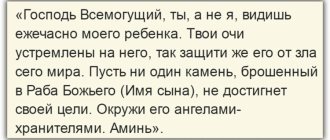“Prayer” or straight twisting on a vertical block is an abdominal exercise for those who want real relief. The problem with crunches on the floor, exercise ball and bench is that they are difficult to achieve progression of working weights and muscle hypertrophy. People have been rocking their abs these ways for years, but their stomach just remains flat with just a hint of a six-pack. Cable crunches help load the core of the body, allowing for progression of weights. It builds “cubes” quite quickly. Therefore, movement is included in bodybuilding programs on an ongoing basis. But it is also used in strength sports. This is almost the only abdominal movement that can create a level of load at which the rectus abdominis muscle will prepare for the tension created when performing heavy basic exercises.
The benefits and disadvantages of crunches on the upper block
- The prayer exercise, due to its wide amplitude, allows you to work out the abdominal muscles with great efficiency.
- Develops stabilizer muscles.
- Thanks to the weight plates of the block, the athlete can change the load over a wide range.
- This exercise is considered safe, so it can be included in the training process even for those people who have problems with the spine, but such people must consult a doctor before training.
If there are no contraindications to performing the prayer, and the execution technique is not violated, the exercise is absolutely harmless to the athlete’s health. Of course, you don’t need to use a lot of weight without warming up, even at the beginning of your sports journey.
Follow the correct trajectory. Contraindications to performing this exercise may include diseases of the spine and abdominal organs.
Common Mistakes
When performing the “abs prayer” exercise, trainees often make mistakes that lead to it not giving the expected result:
- Performing regular bends, not “prayer.” This leads to stress on the back, while the abs practically do not work.
- Perform the movement with a straight back. As in the previous case, the entire load will transfer from the abs to the spine. The back should be slightly rounded. A bent position is not allowed, especially in the lower back.
- Hand strain. Many people try to pull weight with their upper limbs. There is no need to do this, since they must exclusively hold the handle in the forehead area. If this is not taken into account, then the triceps and latissimus dorsi muscles will work instead of the abs. You need to keep your hands motionless, feeling the contraction in the press.
- Touching your forehead to the floor. There is no need to bend over too much. This will not give a better result in any case.
- Abdominal relaxation. This cannot be done during the entire movement.
- Lowering with jerks, swinging. This is a violation of the exercise technique.
- Using excessive weights. Firstly, it can lead to various injuries. Secondly, too much weight will be pulled upward, which will prevent you from performing the training correctly.
- Perform the exercise at the beginning or middle of your workout. Like other abdominal exercises, “prayer” should be given a place at the very end.
- Lack of other types of exercise. Of course, to work out your abs, you can only do “prayer.” However, it will be more effective if other movements are added to the training (twisting on a bench, lifting the lower limbs while hanging).
- Movement of the hips. This cannot be done, as the load is transferred to the hip flexor muscles.
- Partial contact of the shins with the floor. They must lie completely on the surface. This will provide good stability and allow you to focus on movement.
In conclusion, I would like to draw your attention to the fact that the training does not have strict contraindications. However, athletes with diastasis are advised to consult a doctor first. If he nevertheless prohibits this exercise, then it can be replaced with crunches using an expander. A wide range of rubber bands allows you to control the load.
What muscles work
During prayer, the rectus abdominis muscle works, but its upper part receives the main load. During the prayer exercise, the following muscles receive load:
- Rectus abdominis muscle.
- Back extensor and lumbar muscles.
Technique for performing the prayer exercise while sitting on your knees
The exercise is performed as follows:
- The athlete takes a position on the block on his knees. In his hands is a handle-rope.
- As you exhale, tilt (twist the body). The movement is carried out by contracting the abdominal muscles. The head drops to the floor.
- While inhaling, the athlete slowly and concentratedly returns to the starting position, leaving the muscles tense.
- Brushes can be held at the forehead or behind the head, whichever is more convenient. By the way, your hands should remain motionless while performing the movement. Otherwise, if your arms help, there is a chance that the biceps and latissimus dorsi muscles will be involved.
- For greater comfort and relief of discomfort, you can place a mat or towel under your knees.
- When performing the prayer exercise, the athlete should concentrate exclusively on the abdominal muscles. During movement, you need to twist your body and round your back, and not just lower your body down.
The best abdominal exercise in the gym
There are just exercises, and there are better ones. And the exercise prayer for the abs is one of them. Because it happens that a person doesn’t seem to be particularly fat, and his abs are pumping, he’s already sweating, but there still aren’t any six-packs on his stomach. Common situation? The trick is that there are many exercises for the abs (even too many), but not all of them give real results. In addition, you need to be able to train your abs. Today I want to tell you about a real hit of box building, about the best exercise for the abs in the gym. Read the most interesting things about programs, training and sports nutrition on my telegram channel https://t.me/bestbodyblog
Why aren't all abdominal exercises equally beneficial?
I don’t care about the myths about abdominal training, I divide all the exercises for it into two groups: working and non-working. The first includes prayer on the upper block, hanging leg raises on the bar, crunches on a fitball, Russian twist (for the oblique abdominal muscles) and, if preparation allows, roller rolling. As well as static exercises - planks and, of course, vacuum. The second includes sit-ups on an incline bench, a folding knife, abdominal exercises with TRX belts from the arsenal of special forces and many other extremely tricky movements that have recently flooded all the gyms.
Note: what does special forces have to do with it? And despite the fact that TRX belts were invented by Randy Hetrick, a US Army special forces soldier who decided to stay in shape while on a mission away from the gym. He used nylon parachute bands as improvised means, which over time transformed into advertised fitness equipment. In other words, to pump up your abs using TRX loops you need to have a level of training like that of a Navy SEAL. Otherwise, their use turns into a difficult, useless and hazardous activity.
Randy Hetrick. The special forces soldier who invented the TRX loops
This may seem incredible to some, but the press itself cannot lift our body from a lying position; it can only bend the spine and slightly lift the shoulder blades off the floor. Further movement to lift the body to a vertical position is carried out due to the efforts of the posterior surface of the thigh. Considering that most people have shortened muscles in this area due to sedentary work, lifting the body turns out to be a very difficult task for them. A person does lifts and crunches, works, puffs, it’s hard for him, but the press does not work.
Not all abdominal exercises are safe
At the same time, the load on the lumbar region increases (because the thought of the need to pump this area does not even occur to a person!), the intervertebral discs are subject to high compression, and the pelvis tilts forward even more. The stomach protrudes forward and becomes visually larger. In other words, the wrong technique for performing abdominal exercises not only does not help to reduce the size of the belly, on the contrary, it can make it bigger! Therefore, I suggest watching a short story about the importance of proper abdominal training:
Pumping up your abs safely
Exercise prayer on the upper block. Three advantages
If, after reading the previous section, you have come to an insight about the cause of constant lower back pain, I suggest that you temporarily, or better yet, forget about the incline bench and turn your attention to the abdominal prayer exercise, or, as it is also called, crunches on the upper block. I have elevated this exercise to the rank of the best abs exercise in the gym for three reasons.
Technique for performing the standing prayer exercise
Technically, this option is not much different from the previous one. So the twisting process is identical, however, this exercise is performed while standing.
- Keep your legs slightly bent and place your feet shoulder-width apart.
- Twisting is performed approximately horizontally.
- When returned, the body does not fully straighten. The abdominal muscles are held in tension.
- During the downward movement, exhale while exerting effort, and inhale when returning.
Classic crunches
3 Classic crunches
Lie on your back, stretch your arms along your body. Bend your knees slightly and place your feet on the floor. Place your palms together and extend your arms in front of you. Working your abdominal muscles, twist your body forward and reach between your knees with your hands. Then lower your back to the floor. This will amount to one repetition, complete the required number of repetitions.
Start regular training according to this scheme, and if desired, increase the load by adding these exercises to your classes.
Implementation recommendations
Since the prayer exercise emphasizes the load on the upper abdominals, it is worth including at least one more exercise for the lower abdominals in the training process, for example, leg raises while lying on your back, on an incline bench, on a stability ball, or while hanging.
- To increase muscle volume, you should choose the following training scheme: 3-4 sets of 8-12 repetitions.
- To reduce weight, the number of repetitions can be increased to 25. This option is suitable for women's training.
You shouldn’t start right away with the working weight. Never ignore a warm-up hike with minimal weights.
Exercises to strengthen your back muscles
A physical therapy doctor will tell you how to strengthen your back in each specific case. There is a whole range of effective and safe exercises, which, if performed correctly, can achieve the desired result.
Baby pose
Technique:
- kneel down;
- completely relax and place your body down on your legs so that your head rests on the floor;
- place your arms along the body, without tension;
- do not move for several moments, breathing deeply, alternately relaxing the muscles as you exhale;
- smoothly return to a sitting position.
The exercise is primarily aimed at relaxing the back muscles and restoring normal blood flow and transmission of nerve impulses in the spinal structures. It is recommended to do it at the end of the working day or after intense physical training.
Stretching on a fitball
What exercises will help strengthen your back muscles and remove tension accumulated during the day? Fitball exercises may be the answer. There are many options for training using an exercise ball. The two most effective exercises are:
- For the deep muscles of the lower back. The lower abdomen rests on the ball, while straight legs are widely spaced on the floor and arms are parallel to the body. As you exhale, the body rises up as much as possible, the shoulders are straightened. As you inhale, the body returns back.
- Bridge. Lying with your back on the ball, with your calves and spine tightly pressed to it, with your feet and hands resting on the floor, the fitball gently rolls under your body. It is important to maintain balance and avoid overload.
Regular exercise leads to significant strengthening of the spinal muscles.
Side plank
Effective exercises to strengthen the back muscles at home for women who want to have a thin waist - side plank. The result is comparable to training in the gym.
Technique:
- lying on your side, leaning on your elbow, with your fingers and palm retracted and pressed to the floor, place your other hand on your waist;
- the legs are on top of each other, only the lower one touches the floor;
- the back straightens, the stomach retracts;
- as you exhale, the body rises and forms a perfectly straight line;
- the moment of muscle strengthening is recorded;
- the body slowly falls back.
During the exercise, you should not let your stomach sag. For beginners, the preferred plank is on your side with your knees bent.
Lunges
Exercises to strengthen your back at home necessarily include lunges. They help stabilize muscles and develop coordination, which protects the spine during walking, running and any physical activity.
Hands are fixed on the hips. The abdominal muscles tense. A big step forward is taken with the right leg, and it bends at a right angle. The thigh is parallel to the floor. The exercise can be done using dumbbells to further strengthen the back, alternating between straight and diagonal lunges.
Dog and bird
How to strengthen your back muscles? An interesting exercise for all muscle groups will help with this. Standing on all fours, your abs tense and your back straightens. Then one arm and the opposite leg rise up together. The limbs are positioned strictly horizontally. The person freezes in this position for a couple of seconds, returning to the original position. Then the exercise is repeated in a mirror manner.
Bridge with hips
The person lies on his back, bends his knees, and rests his feet on the floor. The heels become hip-width apart. The upper limbs lie relaxed along the body. The muscles of the gluteal region contract, and the pelvis rises up, forming a straight line with the shoulders and body. The position is fixed for a few seconds. Then your hips slowly lower to the floor.
boat
The exercise is considered an “easy” version of classic hyperextension. It is good for strengthening the back extensors and abdominal muscles. It is performed lying on your stomach, with your limbs straight and parallel to each other. As you exhale, the arms and legs are raised from the floor to a height of approximately 50 cm and fixed for a few seconds, then lowered back.
Pendulum
This exercise for the back muscles can be done while sitting or standing. In the first option, the tailbone remains motionless, in the second - the feet. The rest of the body moves like a pendulum (metronome), tilting forward and backward to strengthen the spine.
Hyperextension
Hyperextension (hyperextension) is an exercise to strengthen the muscles of the back, especially its lower part, which can be performed using your own weight or additional “amplifiers”. In the first case, the person rests both hips against the support, fixing his legs. At first, he is in a bent position, with his head hanging down, then he smoothly raises his body, without arching at the top point of the body.
Sarpasana
Some effective exercises for strengthening the back muscles are borrowed from yoga. These include sarpasana (snake pose). The person lies on his stomach, holding his hands together behind his back. The forehead touches the floor. The body is relaxed. The legs are straightened in one line, with the heels pointing up.
A deep breath is taken, at the end of which the head slowly rises and leans back. Then, smoothly, without tension, the shoulders and upper back are stretched upward. The muscles are stretched and strengthened, while the legs do not leave the floor.
Exercise "Prayer"
The person kneels on the mat, then slowly lowers his head down, rounding his back. As a result, the forehead touches the floor, and the arms lie relaxed along the body. The muscles relax and stretch.
How to replace the exercise
You can replace the exercise with crunches on a fitball, straight crunches on the floor, or crunches on an incline bench.
There is also another good option for crunches that can replace this exercise in the gym: crunches with an upper block using an incline bench . When performing this exercise, the athlete takes a place on a bench, sitting with his back to the machine. Technically, everything is simple - the movements are identical to any twisting with weights behind the back.
Contraindications
Gymnastics to strengthen the muscles of the back and spine is contraindicated in the following cases:
- exacerbation of chronic pathologies or acute infectious processes;
- serious diseases of the body (oncology, renal failure, hypertension, etc.);
- spinal injuries;
- bleeding;
- severe pain syndrome.
Pregnant women and people who have recently undergone surgery should not perform back strengthening exercises.











